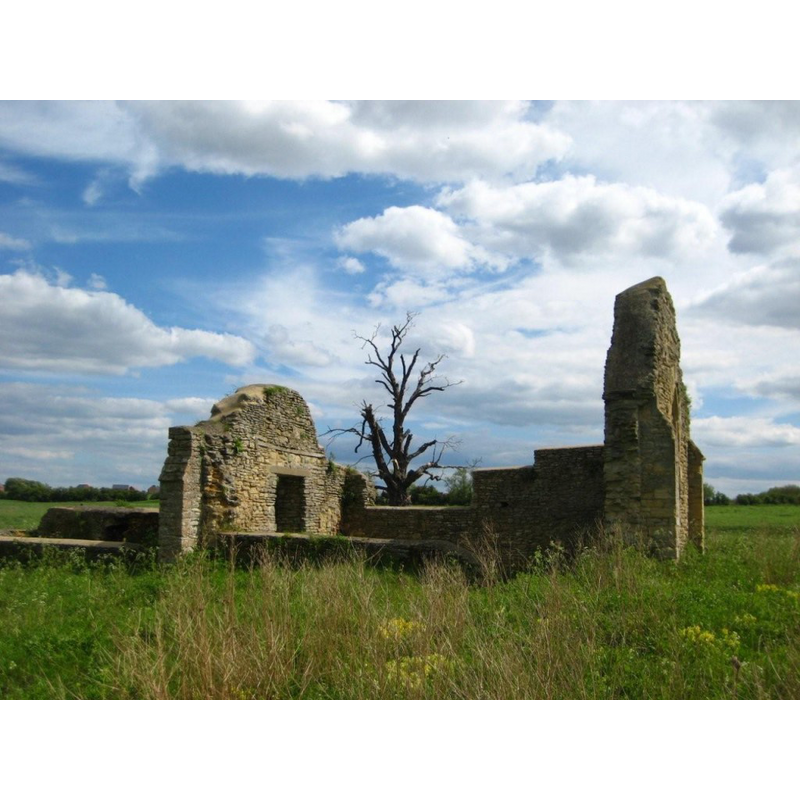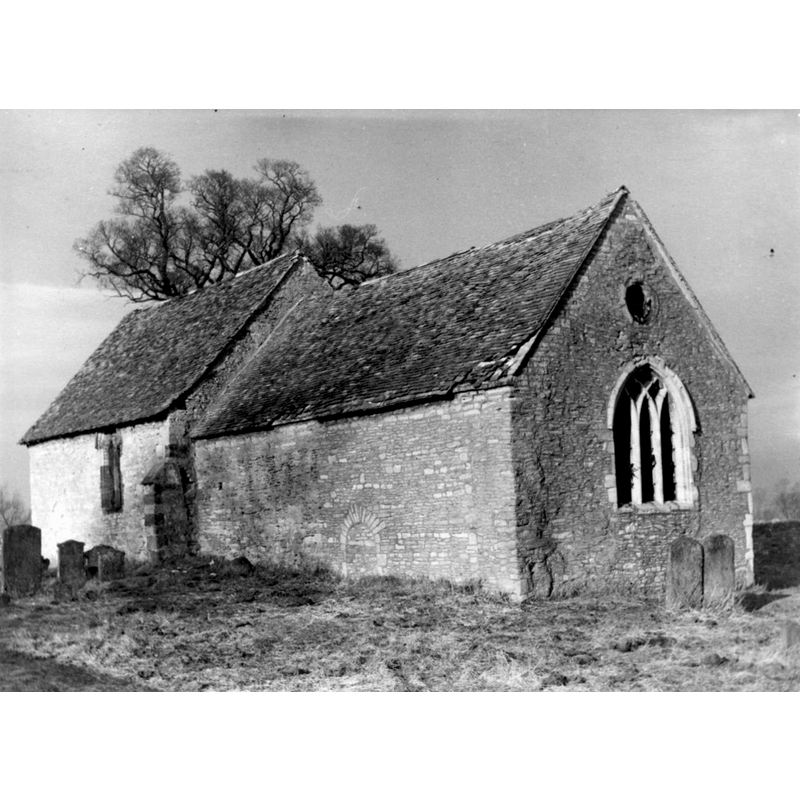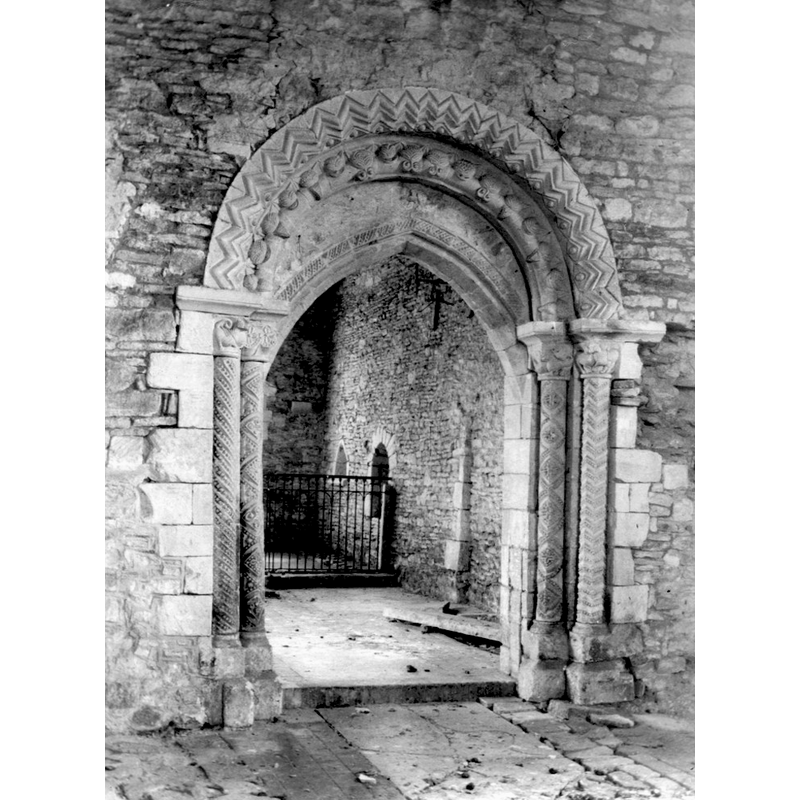Stantonbury / Stanton Barry / Stanton Bury / Stantonbarry / Stantonbury with New Bradwell / Stantone

Image copyright © Save St Peter's Church, 2012
No known copyright restriction / Fair Dealing
Results: 3 records
view of church exterior - southeast view
Scene Description: Photograph taken probably ca.1950; the roof would collapse in 1956, and the church was disused after that
Copyright Statement: Image copyright © Save St Peter's Church, [s.d.]
Image Source: undated [ca. 1950?] B&W photograph in Save St Peters Church [www.savestpeterschurch.com/photos/] [accessed 25 February 2016]
Copyright Instructions: No known copyright restriction / Fair Dealing
view of church exterior in context
Scene Description: the roof of the church had collapsed in 1956; the church was disused by then and in ruins by 1973; this is a view of the church ruins in 2012
Copyright Statement: Image copyright © Save St Peter's Church, 2012
Image Source: digital photograph 14 May 2012 in Save St Peters Church [www.savestpeterschurch.com/photos/] [accessed 25 February 2016]
Copyright Instructions: No known copyright restriction / Fair Dealing
view of church interior - chancel arch
Scene Description: Source caption: "The church in the 1950s was already empty. This arch was moved to St James’ church in New Bradwell."
Copyright Statement: Image copyright © Save St Peter's Church, [s.d.]
Image Source: undated [ca. 1950?] B&W photograph in Save St Peters Church [www.savestpeterschurch.com/photos/] [accessed 25 February 2016]
Copyright Instructions: No known copyright restriction / Fair Dealing
INFORMATION
FontID: 17383STA
Object Type: Baptismal Font1
Church/Chapel: Parish Church of St. Peter [church in ruins since 1956]
Church Patron Saints: St. Peter
Church Location: Wolverton Rd, Stantonbury, Haversham, Milton Keynes MK19 7DX
Country Name: England
Location: Buckinghamshire, South East
Directions to Site: Located 5 km WSW of Newton Pagnell, 5 km NE of Stony Stratford - its walled graveyard lie at the north eastern edge of the new Stanton Low Country Park, near Great Linford, Milton Keynes.
Ecclesiastic Region: Diocese of Oxford
Font Location in Church: Inside the church, at the W end of the nave, S side [cf. FontNotes]
Century and Period: 12th century (early?) [re-cut in the 17th century], Norman [altered]
Font Notes:
Click to view
There is an entry for Stanton[bury] [variant spelling] in the Domesday survey [http://opendomesday.org/place/SP8442/stantonbury/] [accessed 25 February 2016], but it mentions neither cleric nor church here. Sheahan (1862) notes: "The font is large and of the same shape as the pulpit [i.e., octagonal] with trefoil-headed arches on its sides." The Victoria County History (Buckingham, vol. 4, 1927) notes: "The church of Stantonbury formed part of the endowment of Goring Priory in Oxfordshire, as appears from a confirmation charter of 1181, when it was said to be the gift of William and Ralph Barry, brothers. [...] the chancel probably represents an early church to which a new nave [...] was added during the first half of the 12th century [...] The font has a circular bowl developing below to an octagonal shape, somewhat in the form of a tumbler, an octagonal stem and square base. It probably dates from the 12th century, but the panels were recut in the 17th century." Sheahan (ibid.) notes also the new church in New Bradwell, incorporated to the civil parish of Stantonbury in 1857; the font of this church "was given [...] by Lady Chandos (now Duchess of Buckingham)". [NB: the roof of the church collapsed in 1956; a ruin in 1973; whereabouts of the font unknown].
COORDINATES
UTM: 30U 653082 5770807
MEDIUM AND MEASUREMENTS
Material: stone
Font Shape: round-to-octagonal (mounted)
Basin Interior Shape: round
Basin Exterior Shape: round-to-octagonal
REFERENCES
Victoria County History [online], University of London, 1993-. Accessed: 2011-04-26 00:00:00. URL: https://www.british-history.ac.uk.
Sheahan, James Joseph, History and topography of Buckinghamshire, comprising a general survey of the county, preceded by an epitome of the early history of Great Britain, London; Pontefract: Longman, Green, Longman, and Roberts; William Edward Bonas [...], 1862

